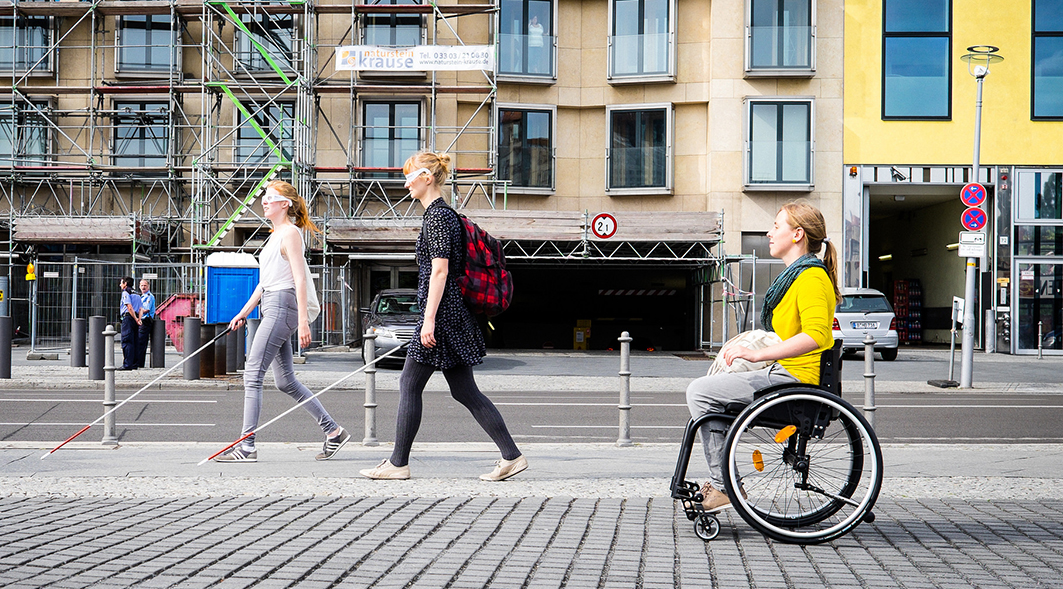
Building Inclusive Cities in the Digital Age
July 16, 2018 — Blog
When considering access and inclusion, I believe it is important to divide it into two sections: physical access and social access. Physical access is the one that seems to get the most publicity at the moment, and it’s certainly the one that we hear about in terms of legal standards. Ramps into buildings, wider doorways, large print and colour contrasting documents and hearing loop installations are all examples of much needed physical access. Rarely, however, do we hear about, or take the time to consider, the importance of social access.
I am a full-time manual wheelchair user with cerebral palsy, so physical access is vital for me to live my life in a full and inclusive way. But I could go into the most physically accessible, universally designed, beautiful building that considers form as well as function and guarantees the utmost attention to physical accessibility, and if the staff members there treated me as a second-class citizen, if their social access training and communication had not been considered in other words, then the physical access of the building suddenly becomes much less admirable.
Many people may disagree with my opinion and, don’t get me wrong, I think that the digital age and technological innovations have worked wonders for the disabled community; you only need to see a conversation in sign language happening over Skype or a wheelchair that folds down to the size of a briefcase and fits in the overhead locker of an aeroplane to recognize the improvements that have been made to the quality of life for many. Sadly, though, the digital age also brings with it a disconnection, a need for urgency and inevitably with that, a lack of patience, concern and care. Complex self check-in systems at hotels, and check-out systems in supermarkets, can prove a nightmare for my visually impaired friends when, really, a personable smile, a helping hand and a typically awkward British conversation about the weather would have got the job done much quicker.
I’ve travelled to, and lived in, six out of our seven continents, and can honestly say that digital advancements in cities have often made my experience easier, but rarely have they made it richer. Although I’d never recommend trying to conquer the streets of Kathmandu in a wheelchair, or crawling up burning hot sand dunes in Namibia, those exhausting experiences made me some incredible friendships that I won’t forget. Wouldn’t it be great if we could continue to create, make and implement the incredible technologies we are so lucky to have in so many cities, whilst also ensuring that social access coincides with its physical partner, and we continue to educate and build awareness around disability by communicating honestly and openly about it, rather than leaving it up to a computer to do an effective, but pretty silent, job?
We can build more socially accessible and inclusive cities for disabled people by refusing to let the conversation around inclusion end. Then we will live in a digital age that considers kindness as much of a priority as results, and that’s a world I want to live in.
Cover photo: Andi Weiland | SOZIALHELDEN e.V. (CC by)